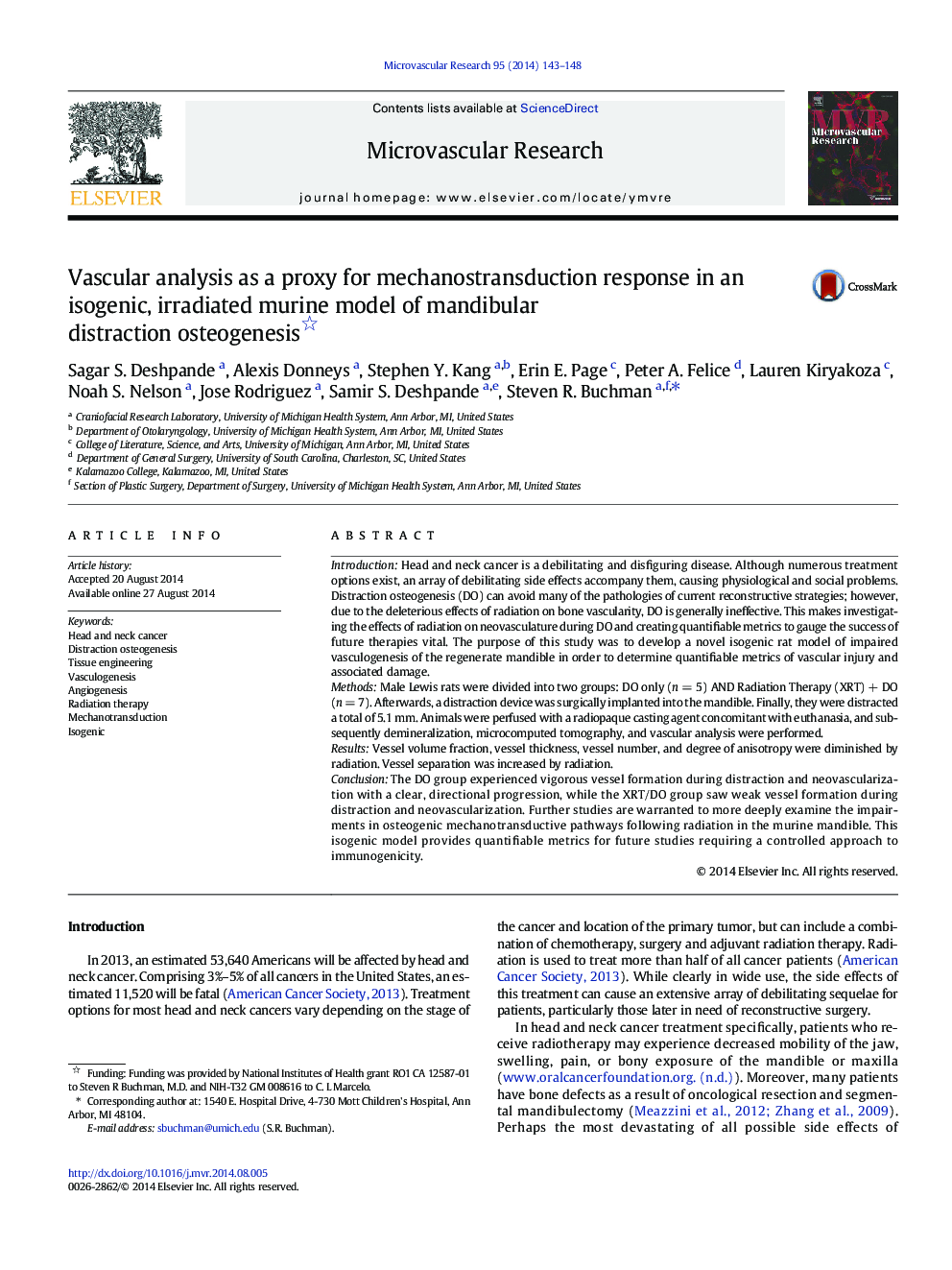| کد مقاله | کد نشریه | سال انتشار | مقاله انگلیسی | نسخه تمام متن |
|---|---|---|---|---|
| 1994748 | 1541289 | 2014 | 6 صفحه PDF | دانلود رایگان |

• Determined quantitative metrics of isogenic murine mandibular vascular regenerate.
• Radiation impairs microvascular metrics of endogenous bony tissue regeneration.
• Radiation disrupts the vascular mechanotransduction in distraction ostoegenesis.
IntroductionHead and neck cancer is a debilitating and disfiguring disease. Although numerous treatment options exist, an array of debilitating side effects accompany them, causing physiological and social problems. Distraction osteogenesis (DO) can avoid many of the pathologies of current reconstructive strategies; however, due to the deleterious effects of radiation on bone vascularity, DO is generally ineffective. This makes investigating the effects of radiation on neovasculature during DO and creating quantifiable metrics to gauge the success of future therapies vital. The purpose of this study was to develop a novel isogenic rat model of impaired vasculogenesis of the regenerate mandible in order to determine quantifiable metrics of vascular injury and associated damage.MethodsMale Lewis rats were divided into two groups: DO only (n = 5) AND Radiation Therapy (XRT) + DO (n = 7). Afterwards, a distraction device was surgically implanted into the mandible. Finally, they were distracted a total of 5.1 mm. Animals were perfused with a radiopaque casting agent concomitant with euthanasia, and subsequently demineralization, microcomputed tomography, and vascular analysis were performed.ResultsVessel volume fraction, vessel thickness, vessel number, and degree of anisotropy were diminished by radiation. Vessel separation was increased by radiation.ConclusionThe DO group experienced vigorous vessel formation during distraction and neovascularization with a clear, directional progression, while the XRT/DO group saw weak vessel formation during distraction and neovascularization. Further studies are warranted to more deeply examine the impairments in osteogenic mechanotransductive pathways following radiation in the murine mandible. This isogenic model provides quantifiable metrics for future studies requiring a controlled approach to immunogenicity.
Journal: Microvascular Research - Volume 95, September 2014, Pages 143–148